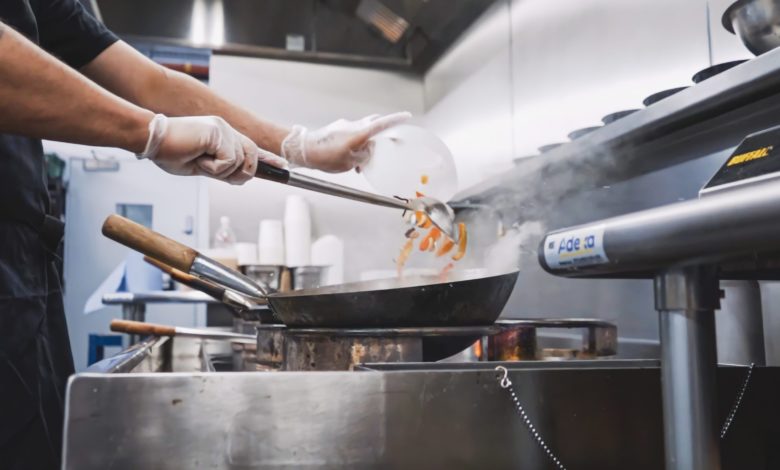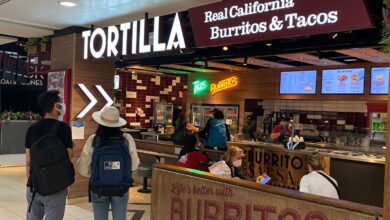Is this the future of food delivery?
Food delivery has been a mainstay for over 10 years, however there is room for improvement in the sector, and avenues of potential growth still to be explored. Catering Today spoke to Mate Kun, co-owner of food delivery start-up Growth Kitchen about its business model, how to connect restaurants with an increased demographic, and how the future of food delivery might be changing

Register to get 1 free article
Reveal the article below by registering for our email newsletter.
Want unlimited access? View Plans
Already have an account? Sign in
While food delivery has risen to become a rival to in-house dining, with brands and restaurants around the UK adopting a delivery service on top of its traditional restaurant setting, Mate Kun, co-founder of Growth Kitchen, believes its potential is not being met.
He explains that the inspiration behind the startup came when he “started to realise all these restaurants that were offering delivery as an option were struggling to scale with delivery, struggling to make it work and reach a wider range of customers. The delivery food is often a hit and miss compared to its restaurant standard, while with delivery fees some are overpriced, and often the best restaurants are not available in most neighbourhoods.”
That is where Growth Kitchen aims to bridge the disconnect between restaurants and their delivery service, and make their delivery options more widely available across the UK, reaching demographics and areas not previously attainable. The concept is simple: Growth Kitchen sets up kitchen ‘hubs’ around the UK, a space where food brands can focus entirely on its delivery output, allowing them to reach a wider range of customers not determined by geographical proximity to their restaurant. As Kun says: “Whatever happens within the kitchen, stays at the restaurant, whatever happens outside the kitchen, we take care of it”.
For Kun, the concept provides “easy scalability” for restaurants with their delivery services that have so far been underdeveloped, saying “even after a decade where food delivery plays such a huge role in the industry, the experience is still disadvantaged”. While delivery apps such as Deliveroo and Just Eat have made it easier, Kun says restaurants and brands have been struggling to tap into an underexplored potential curtailed by the difficulty in expanding.
He says: “It takes too long, right? You have to open a lot of kitchens very close to lots of homes, you have to be able to operate those kitchens, so you have to be very good with data, managing lots of locations. This is what we offered them. We said ‘you can try to expand by yourself, but it will take you six months to find a location, because it takes research to find what location is best for optimization’”.
For scalability, and to best optimise value for delivery output, Kun believes that, for restaurants, outsourcing consumer research grants them the ability to focus on the food. Growth Kitchen has software analytic programmes set up to identify key target demographics and geographical locations best setup for expansion. The concept is based around about matching the needs and desires of consumers and food brands,
identifying that restaurants and consumers want to find each other more easily through a delivery platform, and executing it so that they can.
Kun believes that outsourcing can benefit potential restaurant partners as the software allows them to identify what works specifically for each brand. He says “whereas with us we can log into our software tell you which specific postcodes and routes we’ll form, and what would work specifically for your brand. Then you can log in and within a week you can be up and running in our kitchens and start cooking food and reaching a wider consumer share. We’ve built software tools where you type in any postcode in the UK, and very quickly can see data on different locations, such as the demographics, transactions, size, average age”.
It allows restaurants an easier route to creating a ubiquity in the UK. Kun points to McDonald’s model of success, whereby a large part of its advantage over alternate options is simply its widespread availability. It makes for a better consumer experience is you can grant more restaurants the chance to offer the same volume of service.
“For example, we recently signed a deal with Tortilla, who are starting to realise that a significant portion of their sales is now coming from delivery, and it should be. They’ve realised that this is a really big opportunity they’re missing out on, and with it can actually become the default Mexican player in London, and even beyond that across the UK,” Kun says.
While Growth Kitchen presents an alternative strategy to existing delivery apps like Deliveroo and Just Eat, Kun explains that he believes that there is still a place for both on the market. “We very much want to work collaboratively with all the different delivery apps, and we want to leverage those existing networks of operators to go to market. It’s not really our intention to compete directly with them.”
However, he admits he does “see a world where our restaurant partners will be the default choice of customers on these platforms”. One area he sees where the Growth Kitchen has a major advantage is in sustainability, with its centralised kitchen hub concept allowing for a decrease in food waste compared to existing delivery business models.
He outlines how they “can see that our brands are more than 20% more sustainable than an average UK delivery brand, purely because delivery from our location is a lot more efficient. Rather than each individual restaurant using their own packaging, we can provide it from our centralised kitchens. The packaging of our partners, the way we curate our restaurants, and the fact that they’re aligned with us in our mission to turn food delivery into a much more sustainable world, gives us an advantage. We aim to use minimal plastic at our sites, and our packaging is 100%, biodegradable and recyclable.”
Furthermore, using Growth Kitchen’s data analysis, it is able to “provide restaurants with the intelligence to to cut down on food waste” by predicting volume of delivery. “As you scale, we have more and more access to all of the data of our restaurant partners, and we’re working very closely with our restaurant partners to provide them with all the intelligence they need to order the right amount of ingredients to project how much foods they need to prep, and to give feedback to their staff members so they can cook higher quality food,” says Kun.
Growth Kitchen’s expansion plans are optimistic, and it recently received a £3m seed funding investment. They currently have 20 kitchens, “aiming to have 100 by the end of the year, and by the end of 2023 aim to at least double that number”.







